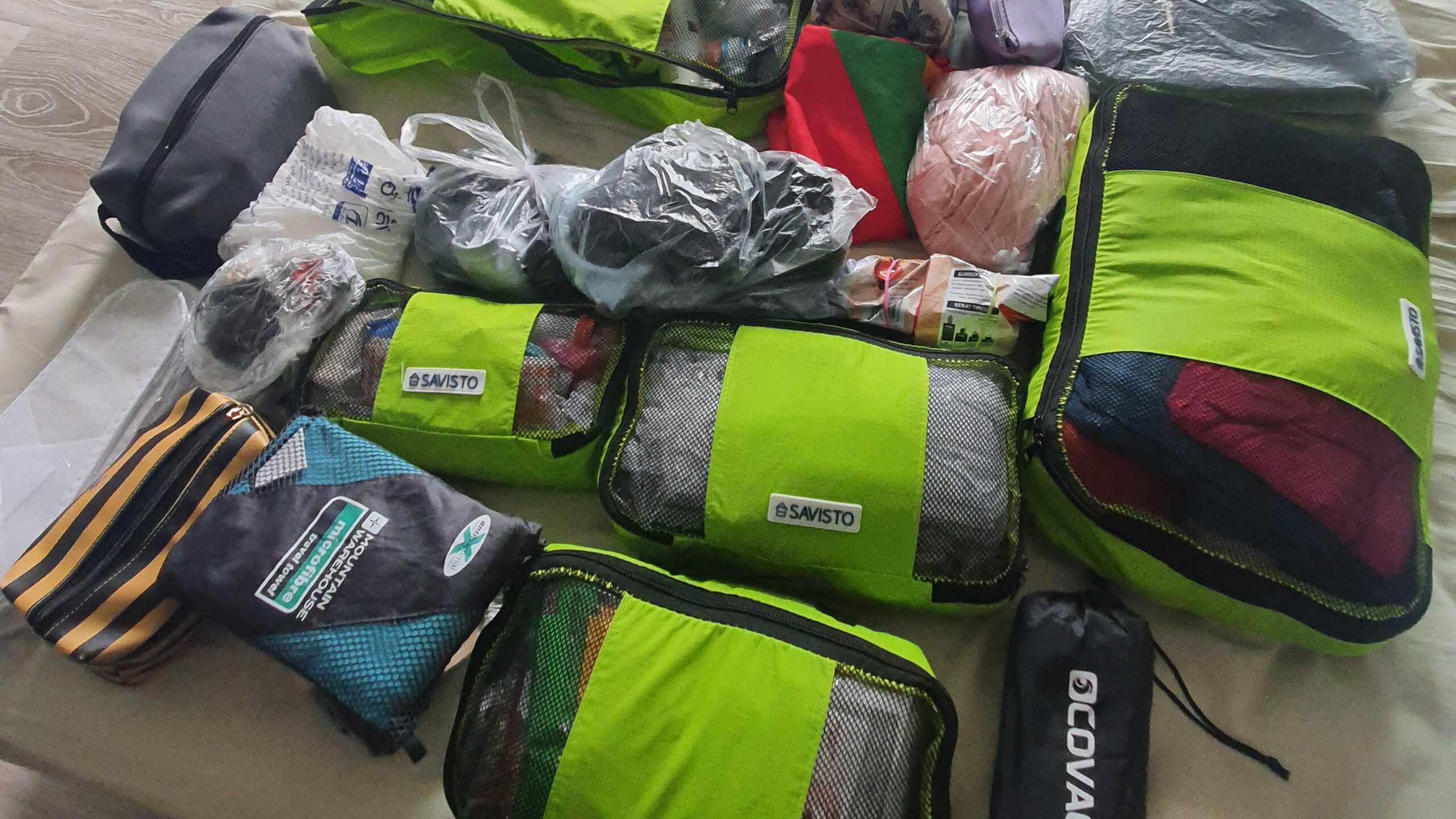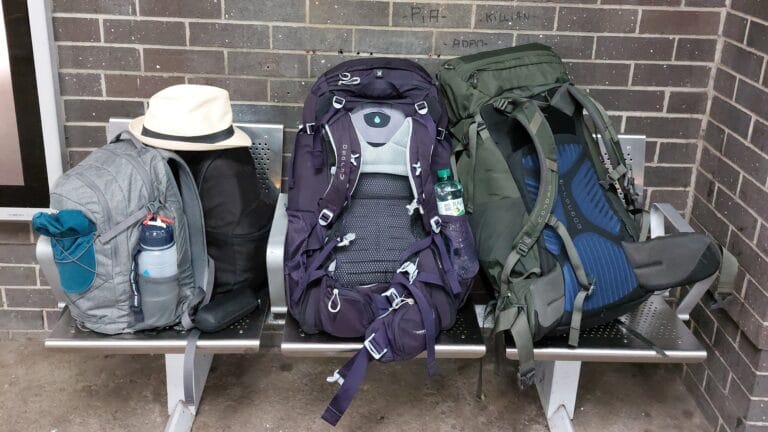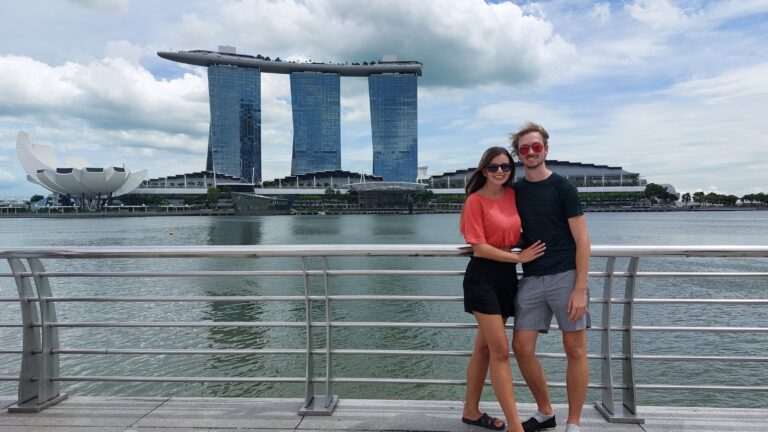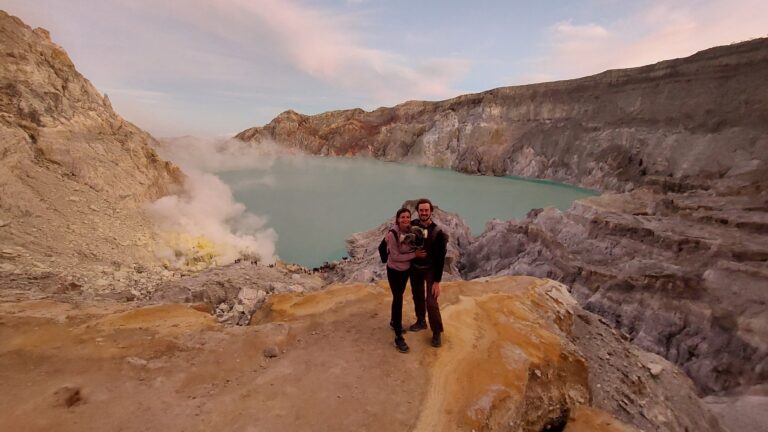Do you know what was the most confusing thing for us when we decided to quit our jobs and leave Scotland to explore the world?
How to pack for full-time travel!
Because it just doesn’t seem possible, right? Reducing your whole life into one backpack or a suitcase.
Turns out, it’s not only possible, but actually not that difficult – if you know how to do it right.
The problem?
Every new full-time traveller is convinced they won’t overpack.
Until they do.
We know this because that’s exactly what happened to us. This is why we now want to make sure you don’t make the same mistakes. So read on, and soon you’ll be packing like a full-time travelling pro!
Have you noticed this post says Part 3? Well, spotted! We’ve got a whole Full-Time Travel Unpacked series where we spill all the sweaty juicy secrets of life on the road and what it really means to live out of a backpack (or a suitcase, if that’s more your vibe).
This post may contain affiliate links. For more information, please read our Disclaimer.
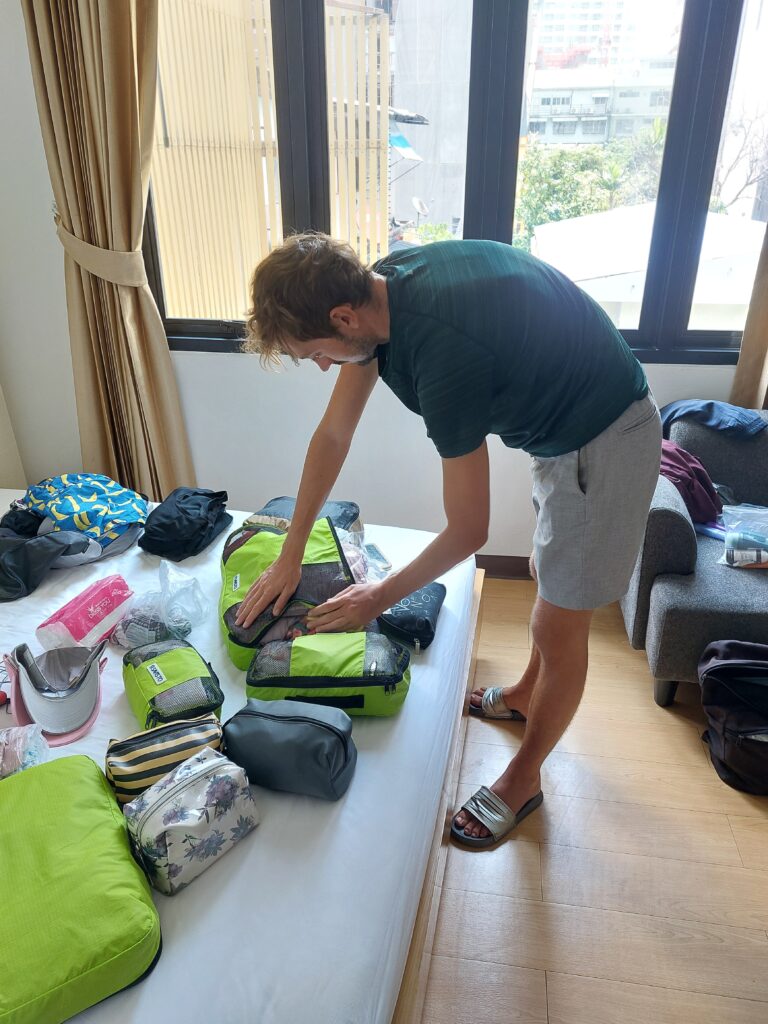
Here’s a little bit about our journey, if you are new here! If you know us, feel free to skip this part.
After leaving our old life in Scotland in March 2022 (it rains too much there), we travelled full-time for almost 2 years. Sounds fancy, doesn’t it? Well, it was. If you think that carrying overpacked backpacks in 45°C heat around streets that aren’t even on Google Maps is fancy. And that’s just 1% of all the fun we had! 😆
During the 2 years we volunteered in Italy and Bulgaria (free travel while learning new skills, anyone?), explored other amazing European countries and backpacked Southeast Asia. Btw, even our secret wedding was more of an expedition than a wedding. 😅
And, of course, we researched and planned everything ourselves, because you gotta keep the budget low, right? If you are like us, you’ve come to the right place, because we want to share all the useful travel tips and info with you!
Excited? Good. Let’s get into it so you can go on your own epic adventures too!
How to pack for full-time travel
We’ve already touched on this a bit in the intro, but let’s first talk about why it seems impossible to pack for full-time travel.
The problem
We all live in flats or houses, right? And they are full of stuff. Heck, even people living in vans have stuff. Even if they are minimalists, it’s still a van-load of things – not something you can suddenly cram into one 50l backpack.
So, how can you pack for full-time travel?
The solution
Okay, first, something that is obvious, but people don’t seem to think about it when they wonder how on earth do full-time travellers make it work:
When travelling, you don’t need ALL the stuff from your home.
Yes, it might seem that you need everything you have in your house to live.
But it’s not the case.
How come?
- This is the obvious part, but your home is full of things you don’t have to take travelling – your bed and bedding, everything in your kitchen, the TV, your home library, pantry full of cleaning supplies etc. etc.*
- You actually need very little to live – provided you are able to make some sacrifices. More on this below.
*This is, of course, generally speaking. You might have a medical condition, which means you need to have a specific pillow with you at all times. Or you might be planning to cook as you travel full-time and want to carry a set of herbs and spices with you (Daniel wished for this many times). Or you might end up buying cleaning cloths, because the accommodation cleanliness levels might not be even close to your standards (true story).
So this is the first part of how to pack for full-time travel: realising you don’t need EVERYTHING you own to actually live.
The second part of the solution is using packing tips and hacks. Because, of course there are tricks to make this work! And we’ll tell you about them all below.
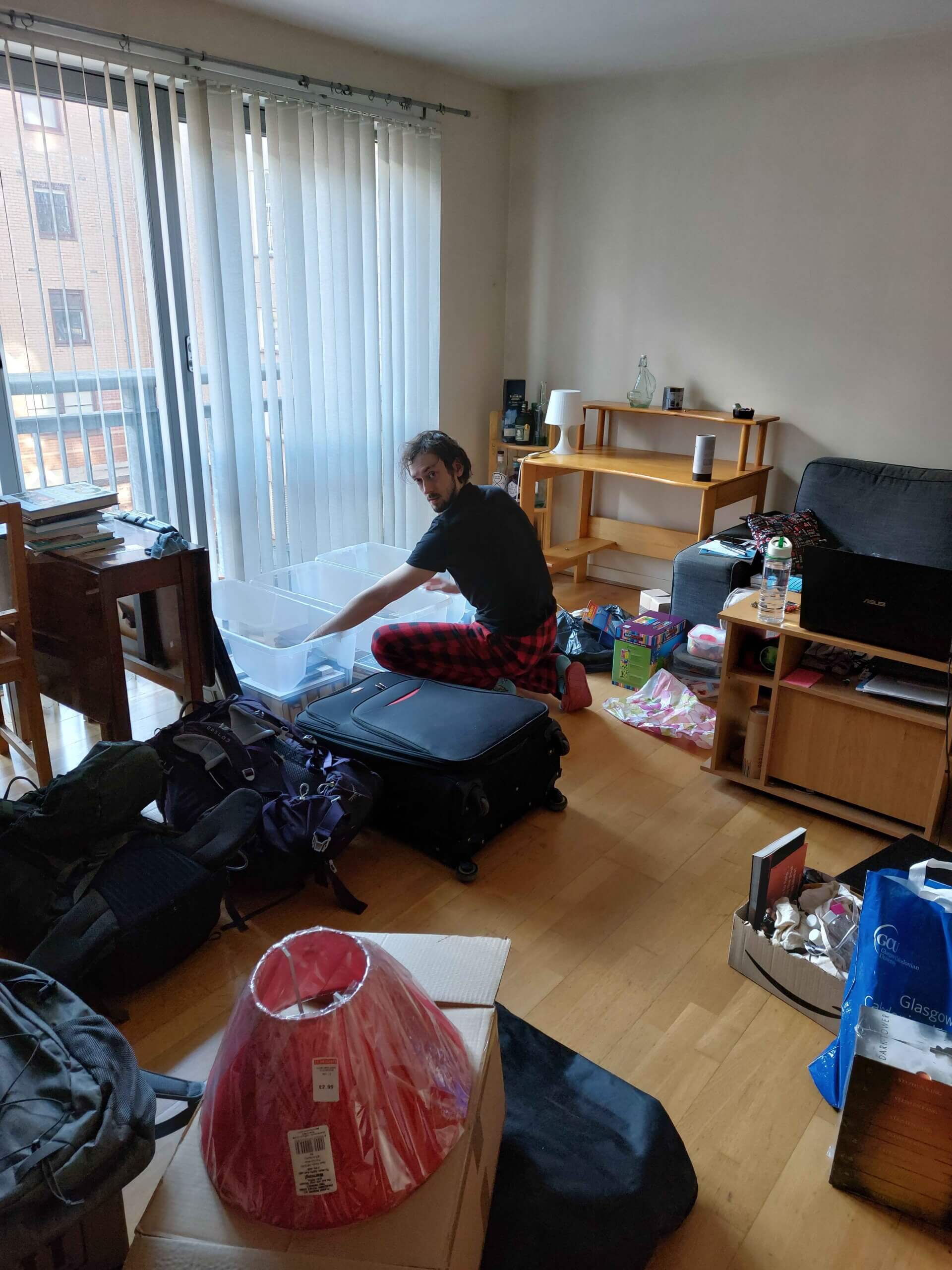
Packing tips for full-time travel
Here are the main principles/tips/tricks that you should follow and use if you want to have an enjoyable full-time travel journey and not suffer every time you have to move from point A to point B, like we did. 😅
What to pack into: backpack or suitcase
One of the first decisions you have to make when planning your full-time travels?
Decide what you will pack into.
A backpack or a suitcase?
Because that decision will influence many other things, such as how much you can pack.
Remember, when carrying a big backpack, it should weigh no more than 20% of your weight, when fully packed.
That means that if you weigh 55kg, your backpack should be max 11kg, which really isn’t a lot.
How to decide
You can approach this decision from two angles:
Either decide what kind of travel you want to be doing (this is important to figure out your budget too). If you, for example, decide to be a budget traveller, you will most likely conclude a backpack is the best option for you.
Or you can first decide on the type of luggage that suits you. If you know you have back problems and absolutely can’t carry a backpack, you might conclude a suitcase is your only option. In that case, you will have to adjust your travels accordingly (e.g. count with using a lot more taxis, since dragging a suitcase along is not always possible and adjust your budget accordingly).
Btw. did you know that Osprey has a suitcase/backpack hybrid option? We considered it for Mirka since she has a painful joint condition, but, in the end, decided to go with a normal backpack (the fact that we then totally overpacked is another story).
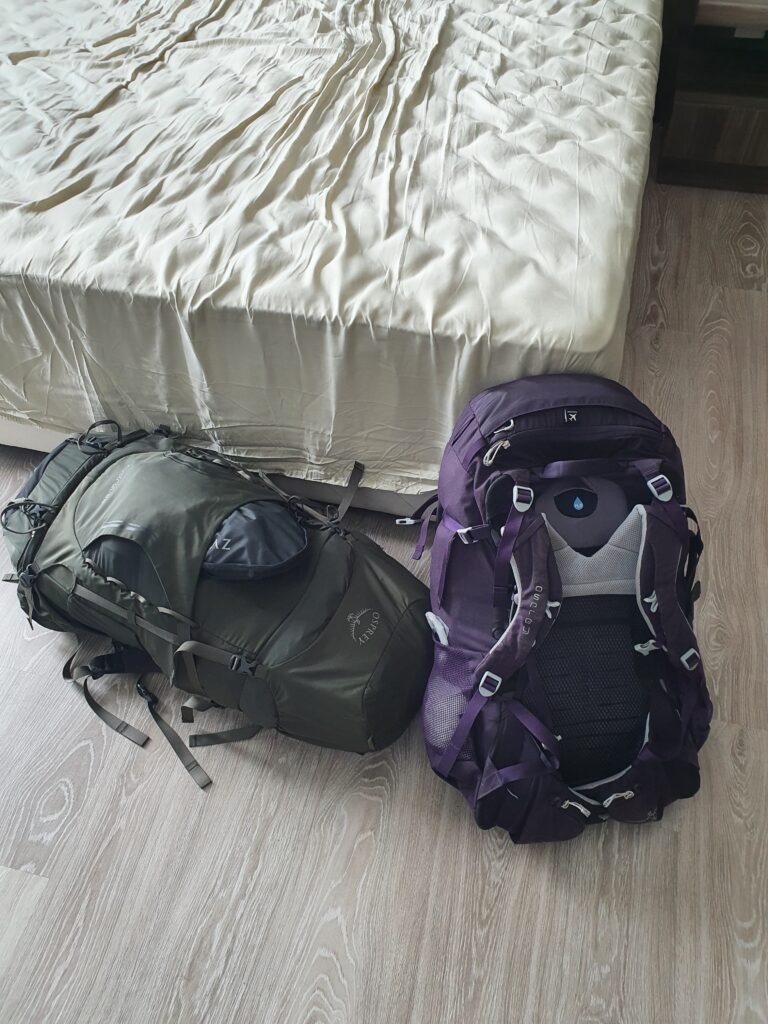
What we would recommend
If you are going to be on the road full-time for a long time, we think backpacks are the only option.
We have been in (or seen) so many situations where a suitcase just wouldn’t have been possible:
- Walking to accommodation through a beach or a river of mud
- Running to catch public transport
- Transporting your luggage from a boat through the sea
- Travelling from one place to another in a small van where luggage gets strapped to the roof
- Transporting luggage on the back of a motorbike
- Carrying luggage up endless staircases to reach the hotel/guesthouse room
And more!
We can’t imagine doing this with big suitcases.
That being said, we know a family who manages, including keeping their suitcases in pristine condition. It does have to be said though, that they travel very slowly as digital nomads, which is quite different from the usual full-time traveller who is travelling to explore.
Don’t forget this
When making your decision between a suitcase and a backpack, remember that you also need a daybag of some kind.
Something that you can always keep on you – on a plane, on a bus, on a day trip etc. Basically, anytime your main luggage isn’t with you, you need a bag where you can carry your valuables – tech gear, paperwork, money, as well as all the necessities – water, snacks, tissues, chargers etc.
This is why you usually see full-time travellers sporting the super-sexy look of double backpacks – one at the front, one at the back (yes, it’s as uncomfortable as it looks 😅).
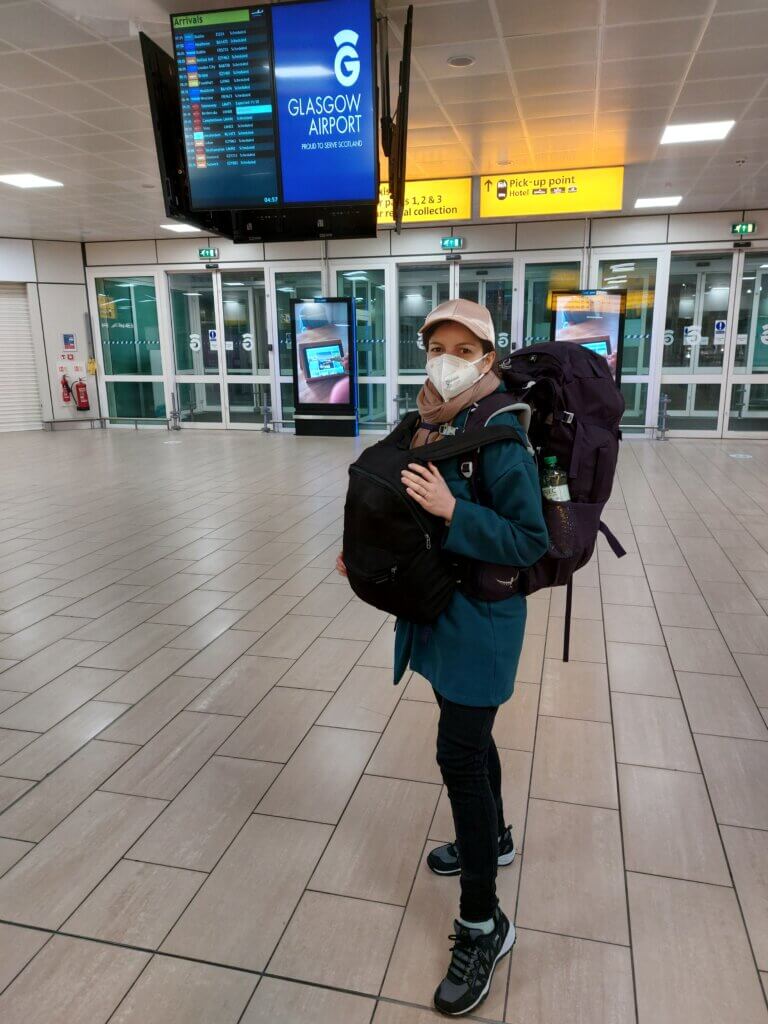
Packing light
Another advantage of choosing a backpack over a suitcase? It helps limit what you pack.
Which means you are less likely to overpack and take unnecessary stuff with you.
That is, if you stick to the recommended 20% weight rule. Btw, when calculating this, remember also the weight of your daypack, if you are going for the double-backpack strategy. Because it does add up.
Why pack light
We’ve already mentioned this, but packing light is the key principle when it comes to how to pack for full-time travel.
It might seem counterintuitive – if I am travelling for a long time, surely I need to take a lot?
If this is your mindset, you first have to change it to:
I will be travelling for a long time, therefore I have to make sure I am not suffering the whole time by lugging overweight luggage with me.
Cause we did that and it was hell.
If you need more convincing that packing light is the way to go, we’ve got a post that shows you the 8 ways your travels will benefit once you start packing light – even on short trips! Oh, and we’ll also tell you how you can manage to pack light in the post, so make sure to check it out.
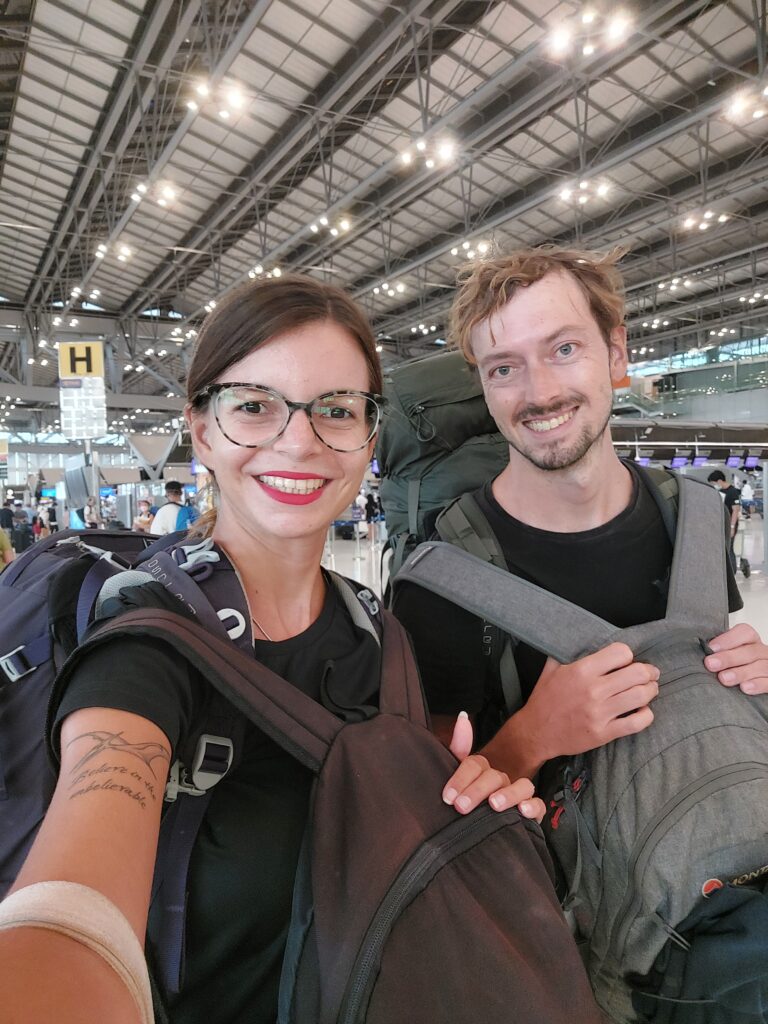
Packing cubes
It’s no coincidence that when travellers get asked what’s the most life-changing travel hack they’ve discovered, so many say packing cubes.
What are they?
Packing cubes are these special bags that do two things: they compress your clothes, so you can fit way more into your luggage than you’d think is possible. And they also keep your things organised, which is absolutely essential when travelling full-time and living out of a backpack.
We have to admit, we had doubts when we bought our first set of packing cubes.
Could these basic-looking bags really be such a life-changer?
Turns out, yes, yes, they could. Now we never travel without them – whether we are going on a short city break or travelling full-time, packing cubes always come with us.
We won’t go on about them here, though, otherwise this post would be mega long.
If you do want more information on packing cubes – whether they really are worth it (yes), where to buy them, what kind to buy etc. – we’ve got a full guide here.
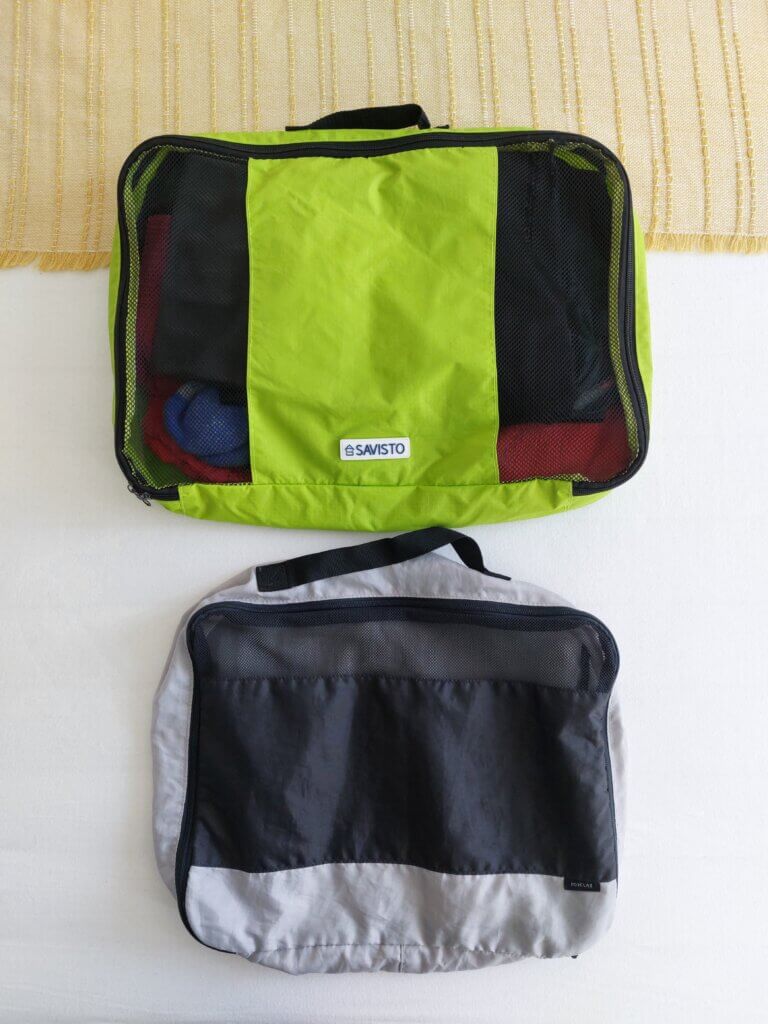
Test, organise, adjust
When you are in the planning stage of your full-time travels, make sure you test your gear, including packing it up.
We recommend testing everything that is new for you – from solid cosmetics to waterproof phone covers to rain covers for your backpack.
Make sure everything works as it should, and if it doesn’t, it’s better to find out while still at home, rather than when on the road.
The same thing applies to your luggage.
Here’s what you should do:
Test
First, test whether all the stuff you’ve decided to take actually fits in. We wouldn’t recommend starting your full-time travel journey by having to sit on your suitcase to even get it closed.
Why not?
- It does mean your suitcase/backpack is most likely way overweight, if you can’t even close it, and it will be a pain to carry it around as you travel full-time.
- You need some space for anything you might need to pick up along the way. Because no matter how well you pack, you might still need to buy some things as you travel.
- If you want to buy anything new, as a memory of the places you visited, or you want to buy any presents for your friends and family, where will you put them if your luggage is already stuffed to the limit?
Organise
Organise your backpack/suitcase well. But don’t expect it to stay this way as you travel – you will not have the time or energy (or just simply won’t be bothered) to pack it nicely every time you move accommodations.
Best thing to do? Figure out a general system that you will stick to.
Here are 4 tips for figuring out your packing system:
- Heavy items go to the bottom of a backpack. You don’t wanna be pulled backwards by a heavy weight sitting right behind your neck.
- If you are travelling with things you know you won’t need for a long time (e.g. colder weather clothes), these should also be stored towards the bottom/somewhere where they won’t get in the way until you need them. (Pro tip: put these things into their own packing cube that you only access when its time comes.)
- This is where you will realise the importance of packing cubes. Bonus tip: we use the small ones to keep miscellaneous items like first aid kit stuff, waterproof phone covers etc. organised and contained.
- If you are travelling with others, decide who will take care of the packing. For example, if you are a couple, you can each pack your own backpack/s. In that case, both of you need to know what goes into which bag (how you divide shared stuff – who takes what, for example) as well as how to pack it there. An alternative option is one person is responsible for packing everything while the other is doing a different task – e.g. researching your future travel plans.
The way we travel is: Daniel is the main packing person, while I (Mirka) am the assistant. That means I collect all the stuff from around our accommodation and organise it for Daniel in one space, usually on the bed. For instance, I pack up our solid toiletries into their tubs, make up into a cosmetics bag, fold clothes etc. That way, Daniel just has to Tetris everything into our backpacks (I say “just”, but it’s the more difficult of the two jobs).
Adjust
Something that you can count on is: no matter how many tips and hacks you read about beforehand, as you start travelling, you will discover what works and what doesn’t for you. What gear was a mistake to pack and what you are missing. What things you packed wrong and what hacks you can use to make it better.
So learn about the general travel tips that are guaranteed to work (like packing light or using cubes), test things out, make sure you create a system for yourself and then adjust as you travel.

What to pack for full-time travel
Now that we’ve covered how to pack for full-time travel, let’s talk about what you should actually pack.
Full-time travel packing list not found
We won’t give you a full packing list, though.
Why?
Because we don’t know what kind of journey you are setting off on.
We don’t know how long you are going for, which places you’ll explore, how many people are going with you (that you are packing for), or what your specific needs are.
What other travel bloggers do is, they share their own packing list instead. We are planning to do that too, hopefully soon.
The problem with that, though?
- You will be drowning in all the different packing lists available on all the travel blogs out there.
- You will most likely end up packing stuff that is not going to be useful for you – just because other travellers said so.
How do we know this?
Cause that’s exactly what happened to us.
What we did was compile 20 packing lists from different travel blogs we liked into one mammoth list.
Many things were the same or similar, of course, like clothes or shoes.
But still, every traveller had their own take on all the other things they said were necessary to pack.
Now, we didn’t just blindly pack it all because someone else said so.
We thought about it, and it all did sound useful.
Turns out, not everything was – we wrote about our packing regrets here.
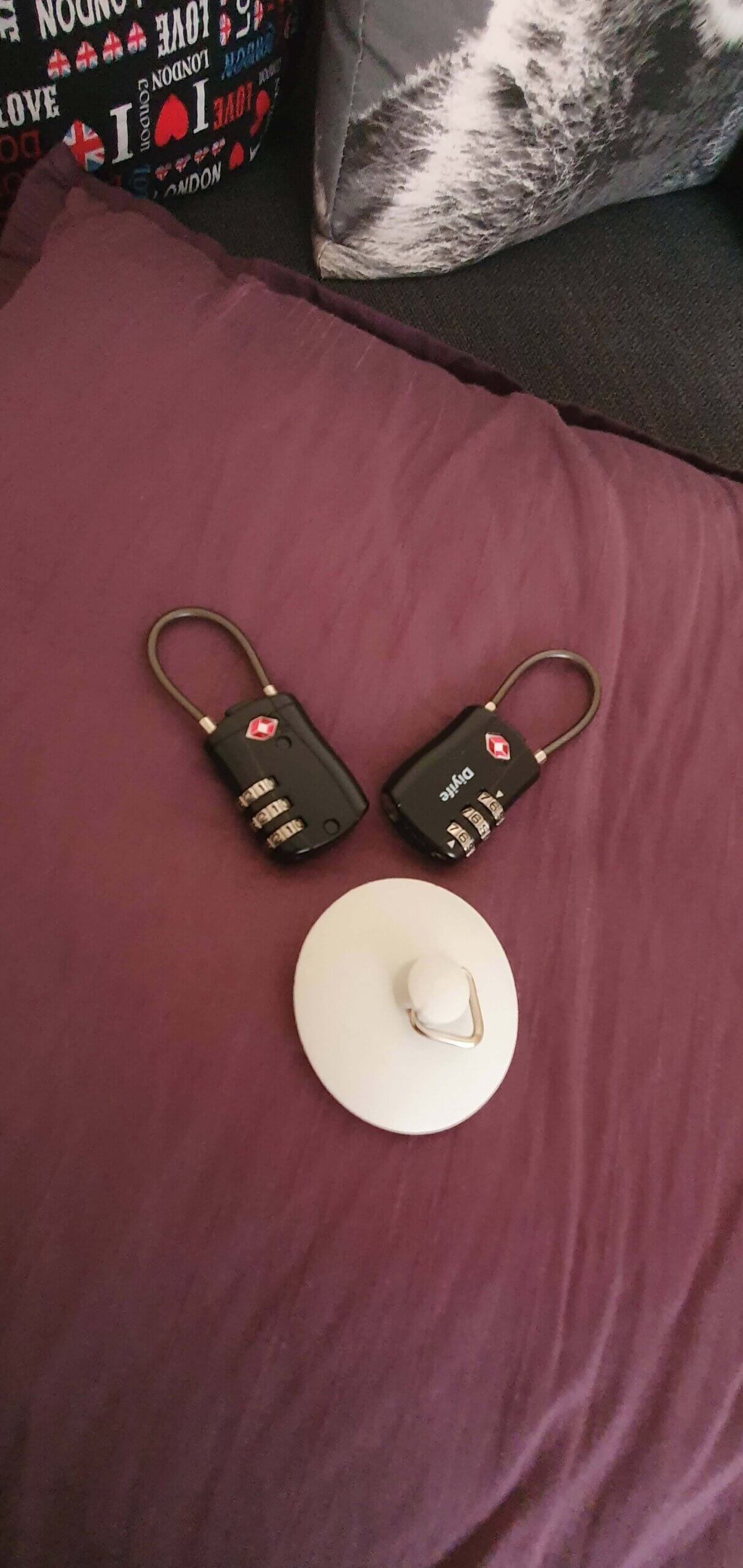
3 big lessons we learned from our overpacking fail
- Use other travellers’ packing lists as guidance, but don’t copy them exactly. Your travel journey is unique. You are unique. Make the packing list your own.
- Don’t try to take all the travel gear you come across. Remember, the goal is to pack light. Not to have every single possible thing you might ever need. Chances are, whatever you’ll need, you’ll be able to source as you travel anyway.
- If you decide to pack something, make sure you understand why you are taking it. Don’t just pack something because it sounds useful (looking at you, doorstopper 👀).
This is exactly why we decided to tell you how to pack for full-time travel, rather than list what to pack. Using the tips from this article, you will be able to create your own, custom packing list that will be useful for you and your travels.
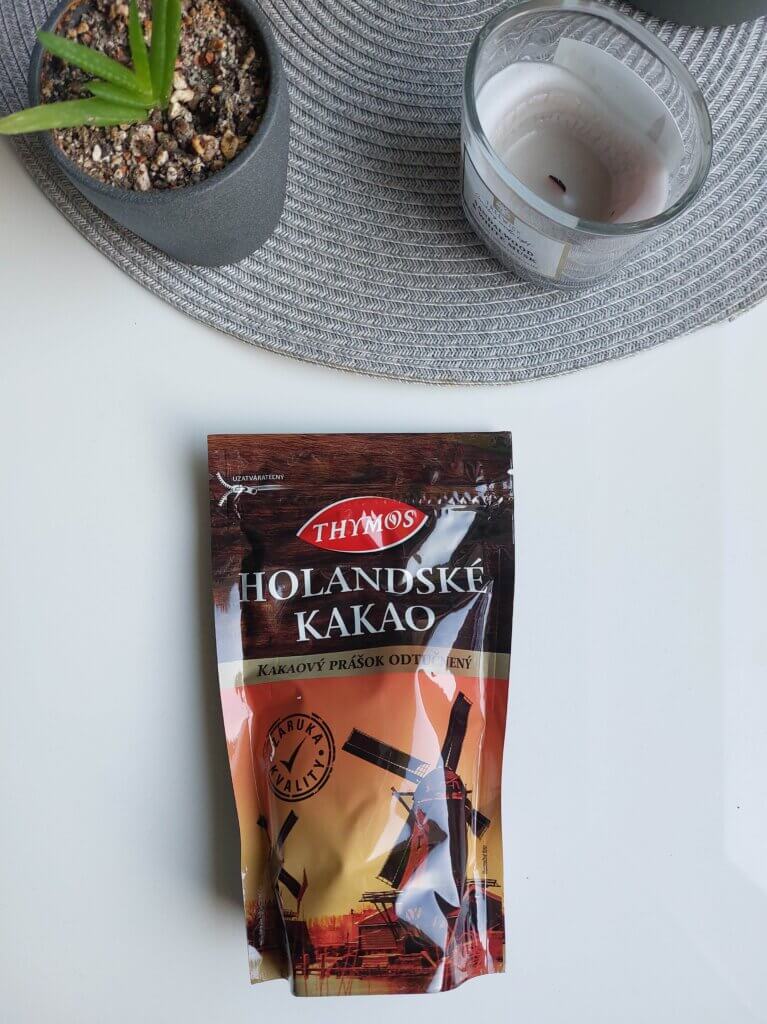
Pack this for full-time travel
Don’t worry, we won’t leave you completely in the dark when it comes to deciding what to pack for your travels, though!
We’ll tell you the general categories of what you should be packing. That way, you can decide for yourself what makes sense to you.
Here are the categories you should think about when packing for your full-time adventures:
Clothes
When packing clothes, always lead with the rule: less is more.
Tips on packing clothes for full-time travel:
- Don’t think about clothes the way you wear them day-to-day, or even when on a holiday. When you travel full-time, you will rewear clothes a lot more often. Not because you suddenly become a dirty person, but because you will not want to spend your travels constantly doing laundry. Also, because it is okay to rewear clothes.
- It might be that you are really into fashion and want many different outfits when travelling. In that case, packing will be difficult for you and you will have to make adjustments – for example, taking a lot less of other things or carrying a lot more luggage with you.
Full-time travellers usually discover they are wearing the same few outfits over and over again. Why? It’s more convenient, practical, and, as you travel, your priorities change – clothes often become an unimportant part of the whole experience. - When deciding on clothes, think about versatility. Don’t pack a skirt that only goes with one specific top. Always think about how you can combine the different pieces you are packing to create many outfits. If you need help with this, learn about capsule wardrobes – they are not just for minimalists, but also super useful for long-term travellers.
- Consider not just the look of the clothes you are packing, but also the material. Material is super important – you want things that are: lightweight, quick-drying, breathable, durable, moisture-wicking, waterproof, UV-protective, and even insect-repellent. Yes, yes there are clothes like that. Like these Craghoppers trousers that Daniel travels with.
Of course, not every item needs to be all those things. But all your clothes should be, at a minimum, light and quick-drying. Light, so you are able to pack light and quick-drying so when you are doing laundry on the go, you can do it fast and not be waiting a century of one item of clothing to dry (this is why we’d never travel with denim again. We tried denim shorts for me, Mirka, but it was useless).

Shoes
Try to take as few as possible, although, admittedly, shoes are quite difficult to reduce.
That being said, we travelled with 4 different types of shoes and it was an overkill.
When choosing shoes, think about comfort as well as the different situations you might find yourself in on your travels – e.g. at a beach, hiking a mountain, going to a fancier bar, walking in rain etc. – and what shoes you will wear in each of these situations.
As with clothes, try to find shoes that are versatile and functional.
And remember, wear the heaviest pair when you are actually moving from one place to another – on a plane, bus etc.
If you want to know more about the 3 best shoes for long-term travel (and what to avoid), read this post.
Cosmetics
In cosmetics, instead of going versatile (8 in 1 men’s products anyone?), consider going solid.
Together with packing cubes, solid toiletries were a total game-changer for us – not just in our travel life, but day-to-day too.
Again, to not make this post even longer, if you want to know more about solid cosmetics, read this post here.
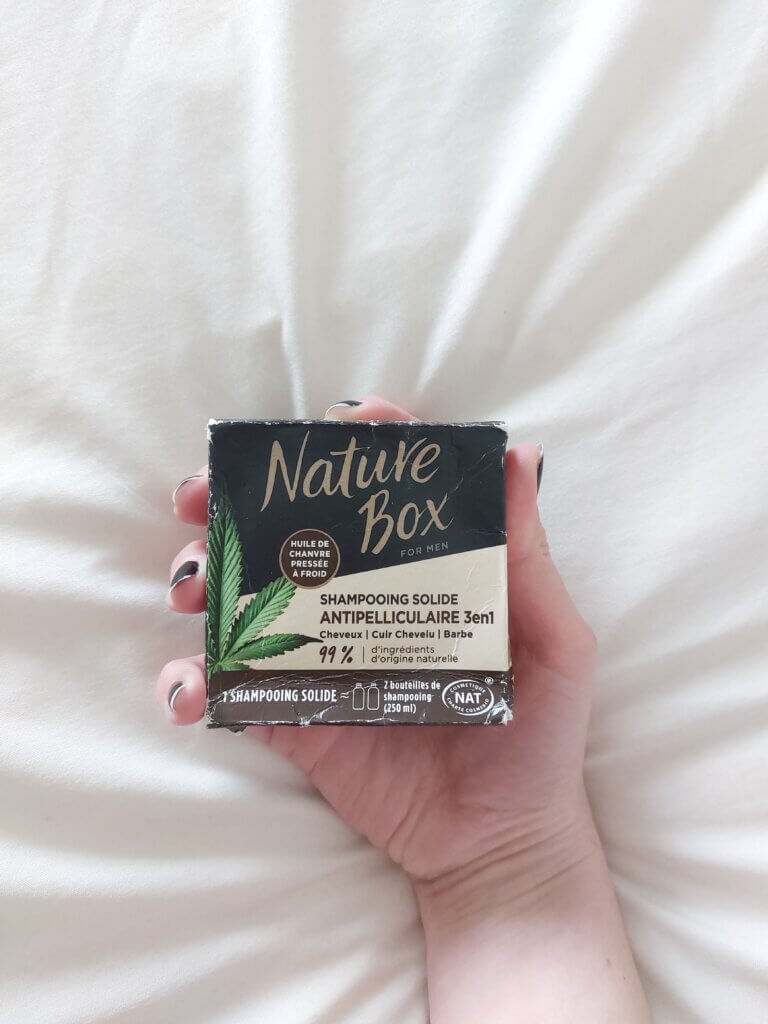
Miscellaneous
This is the category where you have to be careful, because different travellers will suggest different things you need to pack on your full-time travels. And sometimes those things end up being not useful at all, for you. Other times, you discover you are a weirdo who needs to carry unusual things with them.
So do some research. Make a list. And then think about each item so you don’t end up carrying pointless crap you’ll never need.
Some miscellaneous things we find useful and you might want to consider taking: spare plastic bags, elastic bands, waterproof phone covers and pouches, tripod, a small game (this one is our go-to).
Daypack essentials
This would be things that need to be handy, such as: tissues, plasters, painkillers, hand sanitiser, water, and snacks. But also things that you should always keep near you: wallet, all your money and cards, passport, insurance documents, glasses, external hard drive with all your pics etc.
Always keep these near you, don’t accidentally put them into your big backpack/suitcase.
The one tip for picking a daypack?
Make sure that it’s not only comfortable when carried on your back, on its own, but also when carried on the front, with your big backpack on your back. That is if you are going for the double-backpack option, of course!
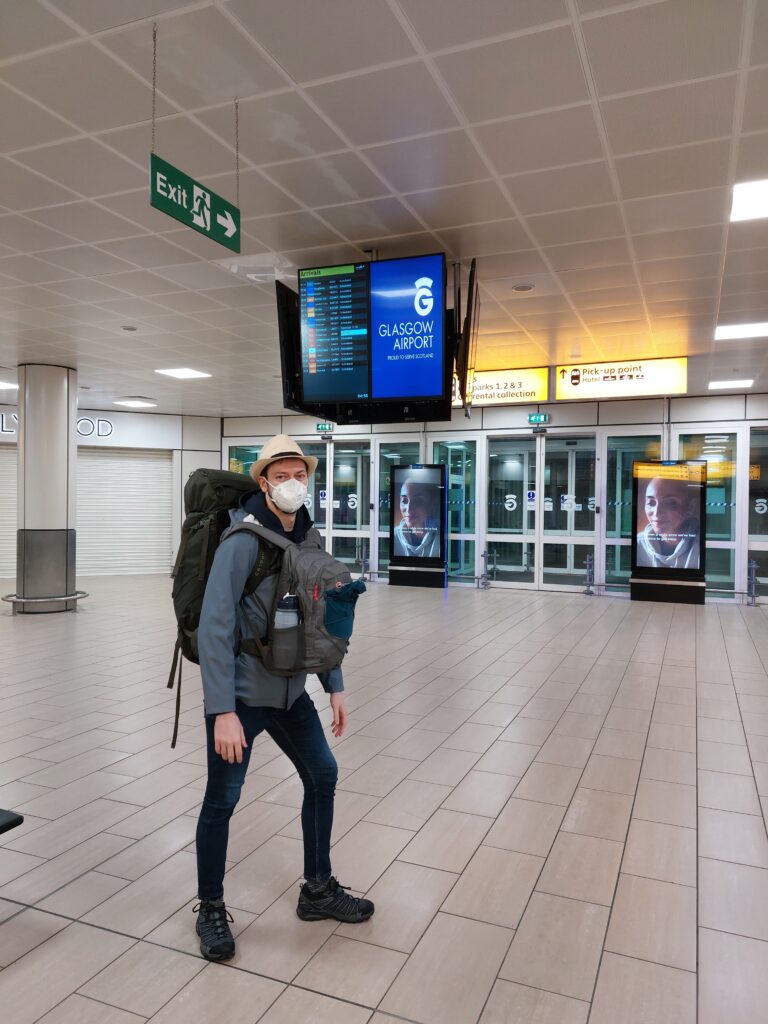
Bonus tip
Packing for full-time travels is one of the biggest things you will do in the planning phase.
So start early.
That doesn’t mean you have to have a backpack half-packed in the middle of your living room, 6 months before you set off.
But consider doing these things:
- Auditing what you have at home that you can take travelling – don’t fall into the trap of buying all brand new travel gear. Chances are, you can make do with many things you already own and the less you spend on gear, the more you can save for your travels and spend it on the road.
- Researching travel hacks. From solid toiletries, to packing cubes, to the extra gear you really do not own and have to buy, such as a filter water bottle, research well so you make the right decision. Remember, you can only carry so many things with you, it’s not like at home, where if you buy something and it doesn’t suit you, you can just go and buy something else, because you have the space and money.
- Creating a Google Sheet or other document where you can note all your info – note what you’ve researched, record what you have decided on (if you are writing your own blog in the future, for example) and build your custom packing list.
- Reaching out if you need more help. If you have any questions about how to pack for full-time travel, drop us a message here or on our Instagram. Alternatively, if you need more help figuring out how on earth you can make all of this work, you can arrange a call with us here.

(Pictured: Batu Caves, Malaysia)
We hope this post helped you figure out how to pack for full-time travel. It might all sound scary, but once you get into the process of actually packing (that includes researching and getting your gear together, not just packing it into the actual luggage), it will all start making sense – we promise.
Just don’t be a burst bottle of shampoo in your backpack (aka a disaster) and overpack like we did. That’s the main 💩 you have to avoid, and then you’ll be fine.
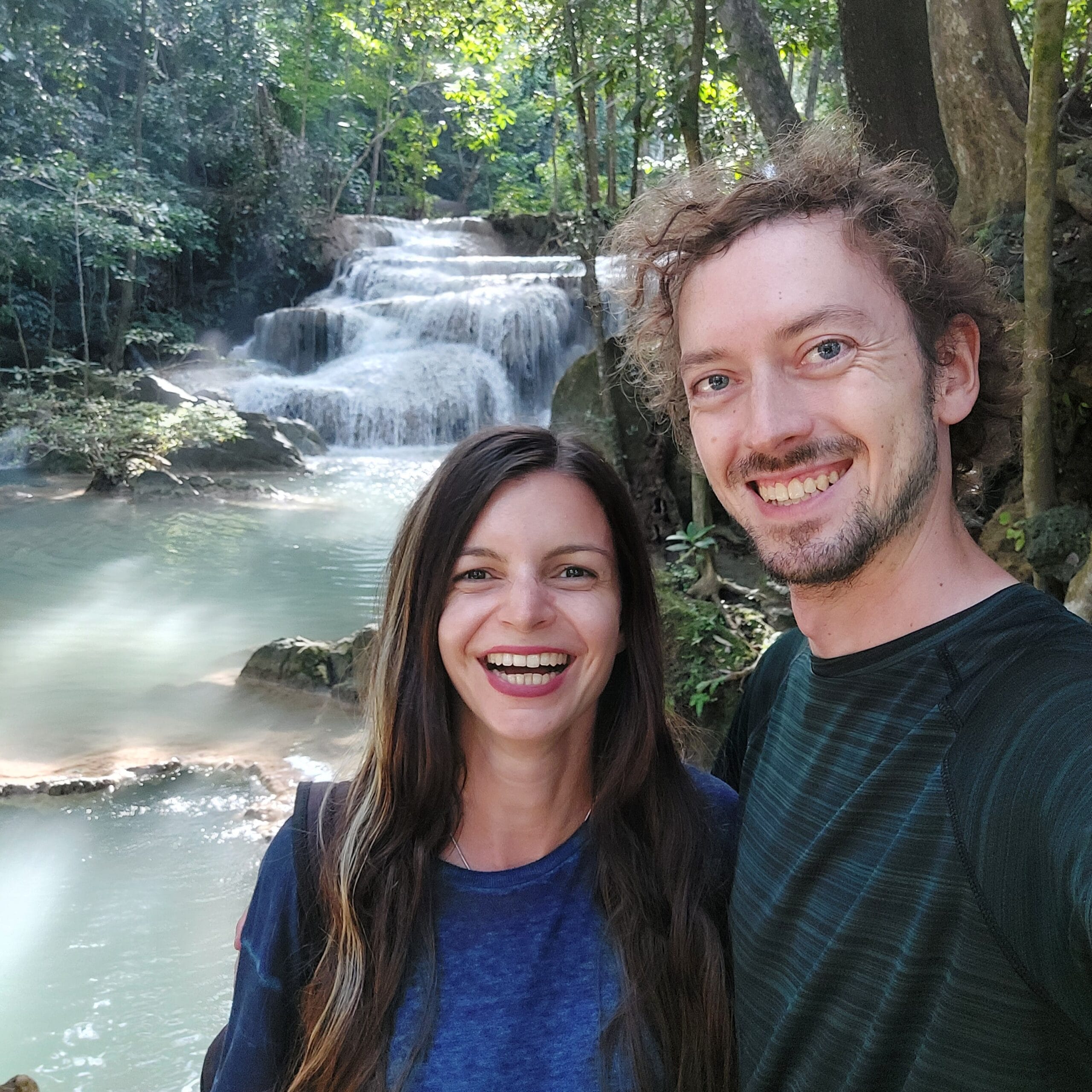
Hi!
We’re Mirka & Daniel — full-time travellers, professional overthinkers & bad luck magnets. We research EVERYTHING and then share all the weird travel tips with you here. Follow along to make your adventures easier! 🌴

